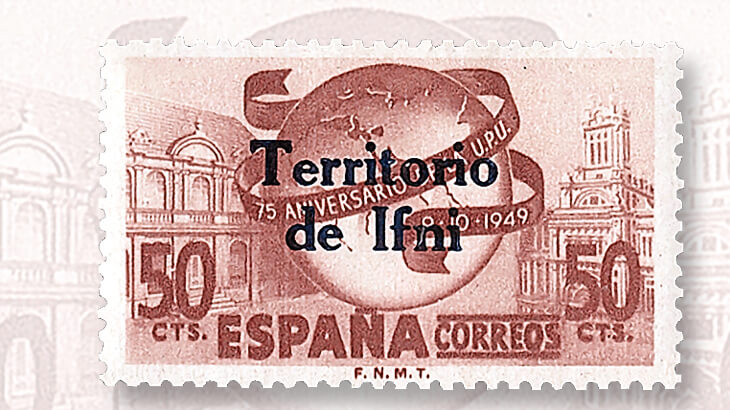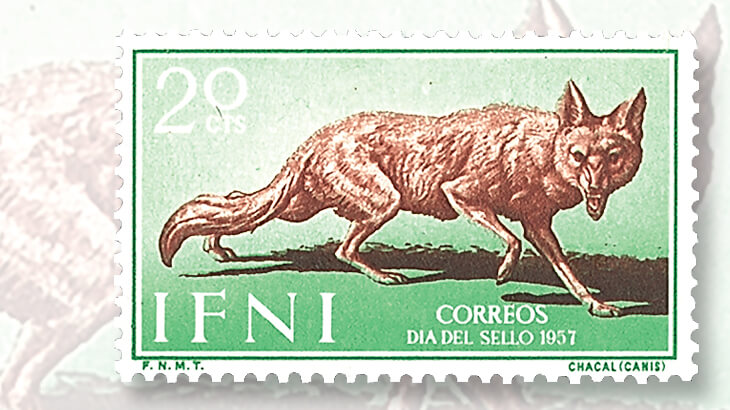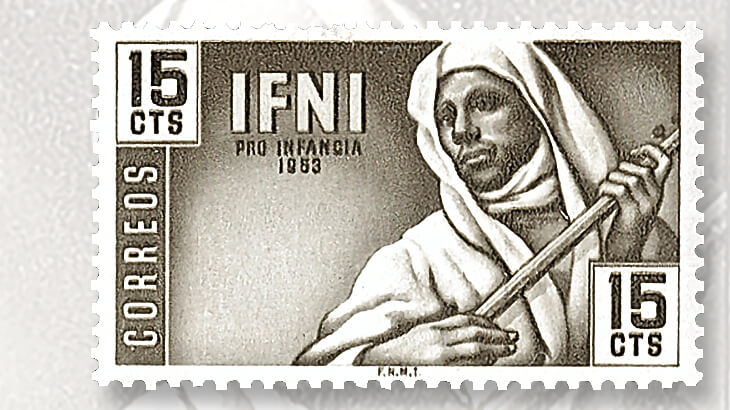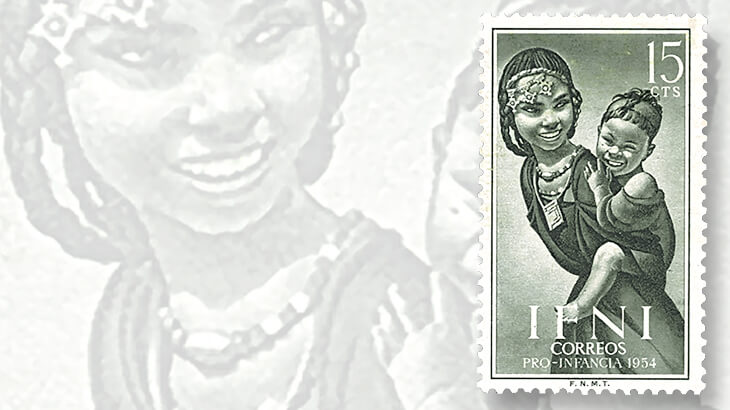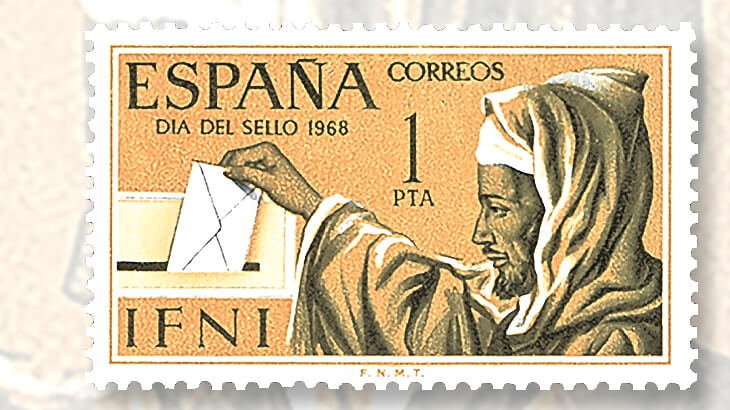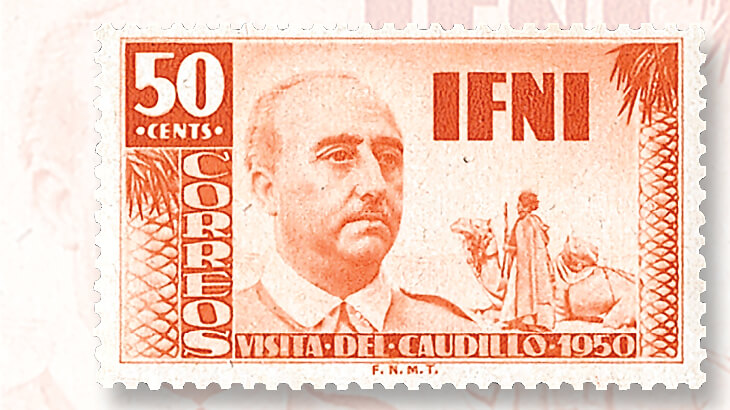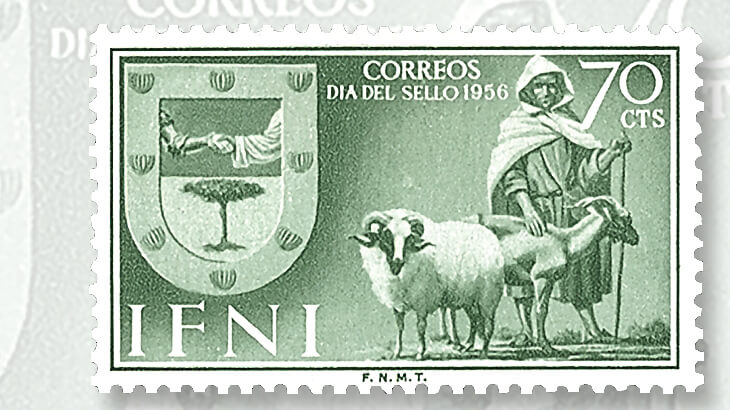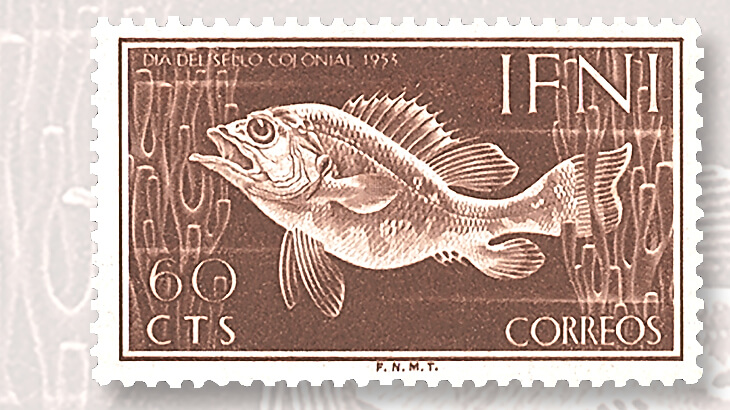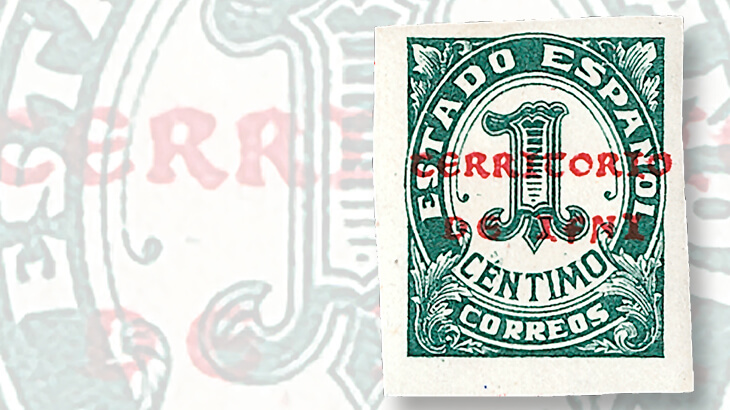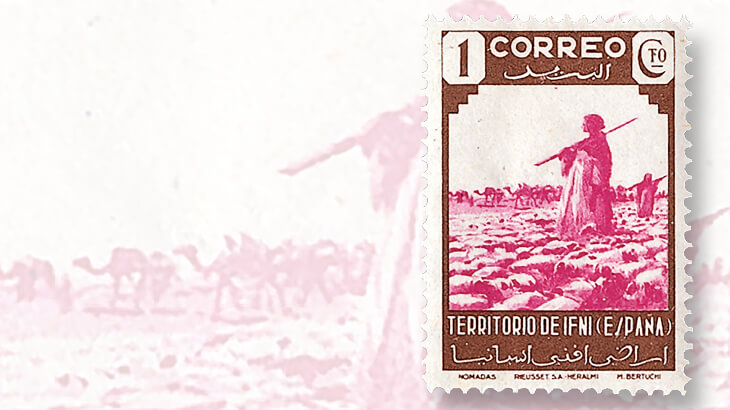POSTAL UPDATES
insights
Looking at the affordable stamps of an overlooked dead country: Stamp Collecting Basics
By Janet Klug
There are many stamp-issuing countries that no longer exist. Some of these so-called “dead countries” are so obscure that they get overlooked and bypassed by many collectors.
Ifni is one of those obscure stamp-issuers that are no longer with us.
Ifni was an African province of Spain. It became a part of Spanish West Africa in 1952, and covered an area of 578 square miles along the Atlantic coast of southern Morocco.
Connect with Linn’s Stamp News:
Sign up for our newsletter
Like us on Facebook
Follow us on Twitter
Ifni’s coastline stretched about 50 miles. Just to the west of its coast are the Spanish Canary Islands.
Ifni’s short history is good for stamp collectors because no new stamps were issued in its name after 1968. The first Ifni issues appeared in 1941, so this small Spanish province had its own stamps for a mere 27 years.
In 1941, the first Ifni stamps were those of Spain’s 1936 1-centimo and 2c Estado Espanol numeral-design stamps overprinted “Territorio de Ifni,” in red or blue ink. Other Spanish stamps from 1936-40 were similarly overprinted. The three highest denominations overprinted for Ifni between 1941-42 were 2 pesetas, 4p and 10p. The overprints were on Spain’s Gen. Francisco Franco issues.
Depending on one’s stamp budget, these three stamps (Scott 14-16, valued unused, respectively, in the 2017 Scott Standard Postage Stamp Catalogue at $110, $425 and $1,100) might be the stopping point for your collection of Ifni stamps, but you never know when a bargain will turn up.
The Scott Standard catalog does warn that counterfeit overprints exist for Ifni Scott 1-16, so be careful.
In 1943, the people and places of Ifni were presented on bicolor stamps that carry the country name — “Territorio de Ifni (Espana)” — as part of the design, not as an overprint. The first, Scott 17, is a 1c stamp depicting several nomadic shepherds. Other designs in this set of 13 depict the Alcazaba Fortress or a marksman.
“Territorio de Ifni” was overprinted in carmine on Spanish El Cid stamps issued in 1936, and the same wording was overprinted on Spanish stamps for release in 1949 in Ifni. The latter designs were Spain’s pair of stamps (Scott 769-770) issued in 1949 for the 75th anniversary of the Universal Postal Union, showing UPU symbols.
Spain’s dictatorial leader, Francisco Franco, visited Ifni in 1950, and the event was commemorated with a set of three stamps in 1951 that show Franco and a desert scene (Scott 51-53).
The people of Ifni — a musician, mothers and children, a farmer and basketball players — appear on subsequent issues in the 1950s. The inhabitants of Ifni were primarily Berbers of the Ait Ba-Amran tribes. Most of them lived in the hinterland along the southwest Atlantic coast of Morocco. The territory borders the southern foothills of the Anti-Atlas Mountains.
The desert made agriculture extremely difficult, and the people relied upon sheep, goats, fish and dry farming.
Some of the Ifni stamps from the 1950s have striking images of wildlife, including a lobster (Scott 74-75, 1954), rock doves (81, 1957) and an interesting but rather frightening jackal (82-83, 1957).
On Nov. 23, 1953, Ifni began celebrating Colonial Stamp Day with a 15c stamp featuring a fish and a jellyfish (Scott 59) and a 60c stamp picturing a fish and branched sponges (60).
This event continued to be observed with a new stamp issue each year on Nov. 23, until the last Ifni postage stamps were issued on that date in 1968: a set of three stamps (Scott 152-154) showing a man inserting a letter in a mail slot.
Ifni also issued semipostal, airmail and special-delivery stamps. Apart from those three expensive early stamps, the remainder of the Ifni stamp issues are inexpensive, full of history, geography and cultural anthropology, and prime candidates for added fun in your stamp albums.
In 1957, Moroccan insurgents stormed into Ifni, and bit by bit the territory was whittled away, though Ifni remained a Spanish possession until 1969, when it was turned over to Morocco.
MORE RELATED ARTICLES
Headlines
-
US Stamps
Oct 7, 2024, 3 PMMcMurtrie dismissed as APS education director following Sept. 21 arrest
-
US Stamps
Oct 7, 2024, 12 PMVasiliauskas named president of Mystic Stamp Co.
-
US Stamps
Oct 6, 2024, 5 PMApgar souvenir card available
-
US Stamps
Oct 6, 2024, 4 PMFirst Continental Congress and U.N. stamps receive Scott catalog numbers
